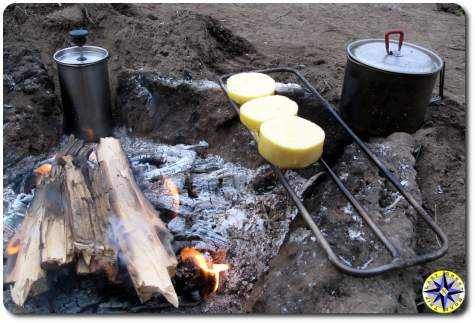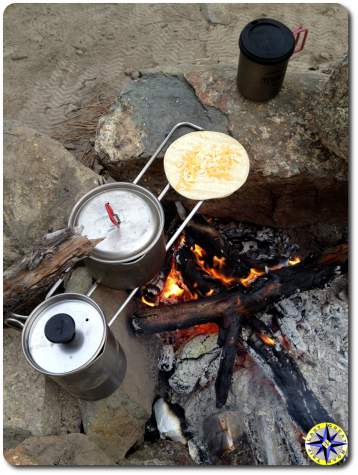 Everyone we know loves cooking out on the trail when camping on an off-road adventure. And as you know the stove you have on hand will have a big influence on what you cook and how it turns out.
Everyone we know loves cooking out on the trail when camping on an off-road adventure. And as you know the stove you have on hand will have a big influence on what you cook and how it turns out.
We love cooking over an open fire. Grilled burgers, chicken, fish, boiling water for coffee you can do it all. But you have to get the fire down to a good pile of hot coals, avoid hot spots and constantly regulate the fire. It can be tricky. For us everything tastes better cooked over a fire, even a simple quesadilla.
The down side is that many times you will find a fire ban or heavy rains have dampened your chance of cooking over open fire. In that case you need to turn your attention to a stove.
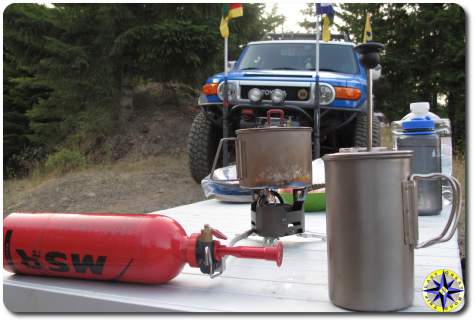 Backpacking stoves are compact, light weight and put out a lot of BTUs for their size. They are extremely efficient at bringing liquids to a boil and making one pot meals (boil in bag) for one or two people. They are not so good at simmering or cooking on anything but full blast. Charred eggs, scorched sauces and pieces of bacon that are both burnt and under cooked at the same time are the norm if you’re not extremely careful.
Backpacking stoves are compact, light weight and put out a lot of BTUs for their size. They are extremely efficient at bringing liquids to a boil and making one pot meals (boil in bag) for one or two people. They are not so good at simmering or cooking on anything but full blast. Charred eggs, scorched sauces and pieces of bacon that are both burnt and under cooked at the same time are the norm if you’re not extremely careful.
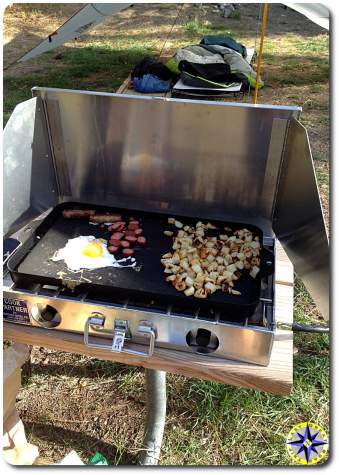 Moving up to camp kitchen stoves allows you to rock your inner Wolfgang Puck. Typically, these are propane based with multiple burners. Camp kitchen stoves provide enough surface area and heat to throw down a griddle to easily fry up bacon and eggs while allowing you to dial back the heat to gently simmer the most delicate sauces. If you can cook it at home on your stove top, you can cook it on one of these camp kitchen stoves.
Moving up to camp kitchen stoves allows you to rock your inner Wolfgang Puck. Typically, these are propane based with multiple burners. Camp kitchen stoves provide enough surface area and heat to throw down a griddle to easily fry up bacon and eggs while allowing you to dial back the heat to gently simmer the most delicate sauces. If you can cook it at home on your stove top, you can cook it on one of these camp kitchen stoves.
Camp kitchens do get bulky and depending on your choice may take up a significant amount of room when you add in all the pots, pans and fuel canisters you’ll need to create your gourmet meal.
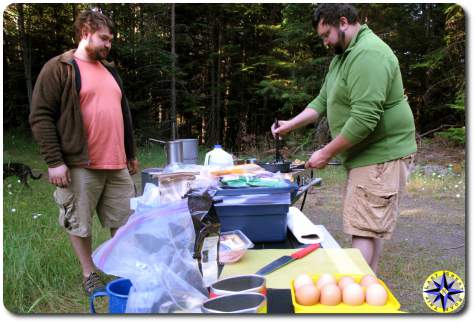 Fuel is another choice to consider. Propane is the driving force behind most camp kitchens and many backpacking stoves. Propane is versatile, readily available (in the USA) and clean burning but you can’t reuse the small bottles and extreme cold temperatures can cause problems. However for most situations propane is a good choice.
Fuel is another choice to consider. Propane is the driving force behind most camp kitchens and many backpacking stoves. Propane is versatile, readily available (in the USA) and clean burning but you can’t reuse the small bottles and extreme cold temperatures can cause problems. However for most situations propane is a good choice.
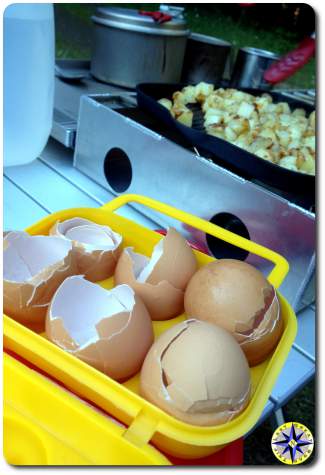 Liquid fuel such as white gas provides a lot of BTUs, performs well in all weather and is readily available (in the USA). Care needs to be taken not to spill the fuel during stove setup and tear down. Many stoves that run on liquid fuel are capable of running on more than one type of fuel including kerosene or unleaded gas (available worldwide) making the stove an extremely good choice for global travelers.
Liquid fuel such as white gas provides a lot of BTUs, performs well in all weather and is readily available (in the USA). Care needs to be taken not to spill the fuel during stove setup and tear down. Many stoves that run on liquid fuel are capable of running on more than one type of fuel including kerosene or unleaded gas (available worldwide) making the stove an extremely good choice for global travelers.
Depending on the location your traveling, size of your team and the meals you plan to prepare, the right cook stove option may be different for each trip. Knowing the pluses and minuses of each cooking option will help you make the right choice. Or you could just go out to eat.

